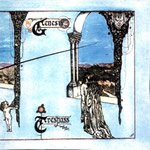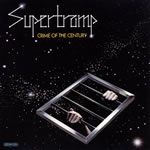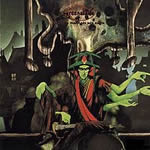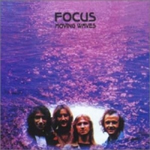Interesting interview with Phil Collins 1997
Interview by William F. Miller 1997
Long before Phil Collins was a pop mega-star, he was a drummer–a great drummer, actually. In fact, a strong argument could be made that one of the main reasons he’s become so successful is because of his strong drumming and rhythmic foundation. Your ear can be drawn to many things in his music, but the feel of the drums is always at the forefront.
At his level of superstardom, it’s easy for the media at large to skip over Collins’ musical accomplishments and abilities. Articles on him these days focus more on the stuff of tabloid fodder–a divorce from his second wife, his leaving Genesis–with little regard given to the actual music, much less to the drumming. That seems a bit odd for a man who’s never strayed far from his first love: drumming.
That passion can be witnessed in two major projects Collins recently completed. First, his new solo release, Dance Into The Light, features Phil not only driving his brand of pop music with his usual flare, but also showcasing a newly found African influence. Syncopated drum beats with multiple percussion overdubs explode from several tracks. And the kicker? Collins makes it a point to mention that no drum machines were used on the album.
As for the second drumming endeavor, Phil satisfied a childhood ambition last summer by putting together and performing with an all-star big band. That’s right, Phil swings. While the musical connection might not seem obvious, apparently Buddy Rich was a big Collins influence. Sitting in the driver’s seat of the sixteen-piece ensemble, playing swinging arrangements of not only standards but of his own tunes, Phil was in drumming heaven. (A live disk of the band will be released by Atlantic Records shortly.)
These are just a couple of recent events, though. Phil Collins has had a remarkable career as a drummer. He’s been laying down impressive, influential, and sometimes even landmark tracks for over twenty-five years. It’s hard to deny that he’s advanced the instrument with his technique, his deeply felt grooves, and his drum sound explorations.
To remind us (and him) of these facts, and to get his reaction to some of the inspiring moments he’s provided, we recently sat down with Collins and played a cross section of his work, drawn from the rock, pop, and fusion styles. Phil, let’s talk drums.
“Apocalypse In 9/8” (from “Supper’s Ready”) Genesis: Foxtrot (recorded 1972)
Foxtrot may well be one of the most important records of the progressive/art rock era. By this time Genesis had solidified around five very talented musicians, having toured and recorded one album as a unit already. (Before that the band was plagued by personnel changes.) Peter Gabriel, Tony Banks, Mike Rutherford, Steve Hackett, and Phil Collins each brought something unique to the musical table.
As for Phil’s contributions, one listen to Foxtrot is enough to convince anyone of his abilities behind the kit. The record is full of challenging odd meters; he plays over, around, and through all of them with aplomb. “Supper’s Ready,” the epic work that contains several sub-sections, has Phil playing in many different styles. But it’s near the end of the piece, in the “Apocalypse” section, where Phil shines. The meter is 9/8, with the bass and guitar holding down a repeated accent pattern.
While this is churning underneath, a composed, melodic keyboard part soars on top. This leaves Phil room for some adventurous drum exploration. He practically solos over the 9/8, playing against both the repeated riff and the keyboard melody. It’s a fine performance even by today’s technical standards.
“This is one of my all-time favorite Genesis pieces,” Phil says enthusiastically. “I used to love playing this one on the road, because I could go way out with it. I have some tapes of us performing it in concert from around this time that make this version sound simplistic. A great piece of music and great fun to play.”
Fans of Phil’s drumming always cite his ability to make an odd meter feel good. They never sound stiff, rigid, or mathematical, like they can when some drummers play them. How does he do it? “I think it comes from being a singer–at this point in the band I wasn’t the singer, but I was a singer. When I learn a section of music that’s in an odd meter, I don’t count it. I sing the pattern in my head. You can get more inside the feel of the pattern if you think of it as just music.
“When I would play something like this piece,” Phil continues, “I would be singing the riff in my head while I was playing it. That allowed me to stretch out over the top of the meter, to get more of a rotating, circular motion going within the pattern. That’s probably why it felt good.”
“Los Endos” Genesis: A Trick Of The Tail (recorded 1975)
By this time in his career, Phil’s chops were becoming very impressive. He was bringing more of a fusion element into Genesis. In fact, A Trick Of The Tail features several pieces with nifty drumming, including the 7/8 of “Dance On A Volcano” and the 13/8 solo section of “Robbery, Assault & Battery” (not to mention the simulated double bass pattern he plays between his floor tom and kick near the end of the tune). Phil also does a pretty good Bonham impersonation on “Squonk,” laying down a fat and sloshy groove.
“Los Endos” was a tune composed around a pattern that Phil “borrowed” from rhythm-master Airto. “I got that beat almost directly from a Santana album that Airto played on called Borboletta,” Phil admits. “I don’t think it was one of Santana’s most popular records, but I was really inspired by it.”
“Los Endos” doesn’t quite sound like a tune you’d hear on a Santana record. (“I was trying for that feel,” Phil jokes.) Yes, there’s that salsa-esque bass drum pattern, but it’s played at such a hyper-space speed that the feel ends up being much more aggressive. The pattern Phil plays with his hands is blistering.
When asked about the sticking of that pattern, Phil taps it out on the table. “Let’s see, it’s really just based on paradiddles,” he says. “I’m left handed, so I play it backwards, but here it is.” A normal (sorry, Phil) right-handed version of the sticking is RLRR, LLRL, RLRR, LLRL.
“I don’t want to preach, but I really think the rudiments are very important to developing your skills,” Phil adds. “Everything comes from that stuff. So many of the patterns I’ve recorded came from things like paradiddles, flam paradiddles, flam triplets…. The big drum duets I did with Chester [Thompson] were all based around the rudiments, and even the tribal stuff on my new album involves them. They might be boring to sit down and practice, but not when you apply them to the drums.”
“Nuclear Burn” Brand X: Unorthodox Behavior (recorded 1975)
Peter Gabriel left Genesis in 1975 and Phil Collins took over the lead singing chores. Phil played drums on the group’s records, but on tour Bill Bruford, and later Chester Thompson, took over the bulk of the drum duties. That caused a little drumming frustration for Phil. Adding to that was the fact that Genesis played set “compositions,” offering little chance for improvisation for any of its members. That left a fine drummer itching to play more. Phil’s outlet? Brand X.
Collins’ side project ended up being one of the most fun and enjoyable fusion bands to come out of the ’70s. (Even their albums’ liner notes were a hoot.) More to the point, Brand X was the vehicle that let Phil air out all of his considerable technique. Sweeping drum fills, over-the-top tempos, bizarre compositions…and odd meters? The craziest, oh yeah.
“It’s like it’s another person playing that stuff,” Phil laughs. “I almost can’t believe I could play that way.” As for the inspiration, Phil is quick to mention, “The Mahavishnu Orchestra’s Inner Mounting Flame. Billy Cobham played some of the finest drumming I’ve ever heard on that record. All of us in Brand X were influenced by that group.
“Brand X was where I went to have fun,” Phil says. “An analogy would be that it was a place where I could go and take off all of my clothes and live, to do things I couldn’t do where I did live, which was Genesis. Genesis was at one end of the spectrum and Brand X was at the other. Doing both was a perfect combination for me, at least for a while.”
“Intruder” Peter Gabriel: Peter Gabriel III (recorded 1980)
The birth of the Phil Collins “face hugger” (as he called it) drum sound–here’s where it happened. We’ve all heard it by now: that heavily gated, up-front drum sound that dominated the music and eventually the airwaves (on other Collins tunes) around the world. But “Intruder,” the opening track on Peter Gabriel III, was the beginning.
“It’s funny,” Phil responds after hearing the tune, “I remember that sound as being further ‘out,’ more extreme and almost too hot in the mix. I guess we’ve all become used to it now.”
How did it come about? “This was during a time when Peter couldn’t afford to keep a band on full-time,” Phil explains, “so I offered my services. I had been on the road with Brand X and had just gone through my first divorce. I was free–have drums will travel!
“So I arrived at the studio and the first thing Peter says is that he doesn’t want me to use any cymbals,” Phil laughs at the memory. “I said, ‘I agree with you in principle, but couldn’t I just use a hi-hat?’ He said no metal on this album. So I didn’t use any cymbals.”
The recording sessions for “Intruder” ended up being an important event for Phil. It’s where he met his longtime engineer/producer, Hugh Padgham. Hugh and Phil have had an amazing amount of success together ever since. “Hugh was just engineering on that, actually,” Phil says. “Steve Lillywhite was producing. They set me up in the Townhouse’s [London recording studio] stone room, and I played a bit while they fooled around with miking combinations, compressors, noise gates. All of a sudden, I heard this sound….”
That sound–that heavily gated, open-and-closed effect–inspired the drummer. He started playing a pattern that timed perfectly with the opening and closing of the gated reverb. “I just started fooling around with this beat, and the next thing I know Peter is shouting over the intercom, ‘Don’t stop! Give me that for ten minutes–just that!’ So I played the beat, and then afterwards I asked him what he was going to do with it. What did he say? ‘I don’t know yet!”
The pattern for the song, while being very simple, has a great feel that works perfectly with the sound of the drums–a great performance to be sure. “It’s very simple,” Phil states, “I just doubled the bass drum part with a couple of toms. The challenging part was playing it for ten minutes without wavering.”
“In The Air Tonight” Phil Collins: Face Value (recorded 1981)
Yes, everyone knows the song. But more importantly, everyone knows the drum fill. “In The Air Tonight” was the breakout hit single that launched Collins’ solo career. It was one of the most popular tunes of the 1980s, and to this day you can see thousands of people air-drumming along to that rhythm at Phil’s concerts. It’s the hook of the song.
“You’re right,” Phil acknowledges, “that fill has become the hook, and it’s become a bit of a trademark for me.” It does seem to turn up in Phil’s playing now and again. Why is that? “It’s very natural for me,” he admits, “that circular motion that happens when I play the fill. I really like it, although it’s become a bit of a noose for me–everyone asks me to play it.”
“There is something I’d like to point out about that fill,” the drummer offers. “You may not believe this, but I never planned to have a big fill at that point in the song. I just wanted the drums to enter. Well, after I did about five takes of the tune, I started to get a bit more adventurous, and on the sixth take that fill happened to come out. While I liked the fill, it was really the rest of the take that sounded very good, and that’s why I kept it. So that whole thing–one of the most important parts of the song, really–happened by accident.”



